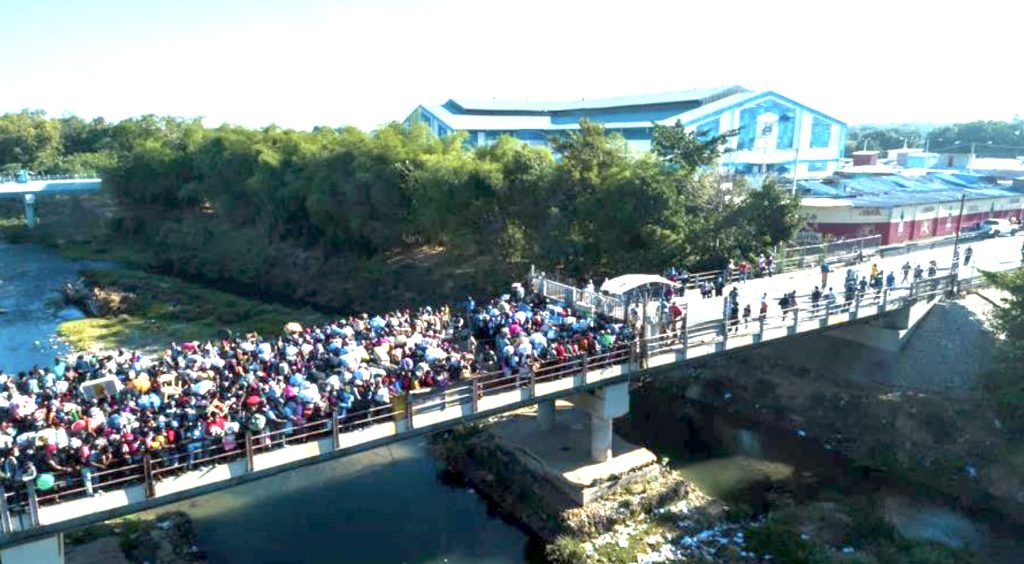
On occasion of the recent touring of the border by the OAS Secretary General, Carlos Castillo urges a change in strategy to one where the successful operation of Codevi industrial park on the border be replicated. Writing in Diario Libre, he says the commercial wall is a proven path to a stronger border.
Castillo is a lawyer, political analyst and former consul in Port-au-Prince.
“Instead of building a concrete wall, imagine a ‘commercial wall’ along the Dominican-Haitian border. This isn’t just an idealistic notion; it’s a proven strategy, exemplified by the Codevi industrial park,” he writes. He highlights that “in these uncertain times, with renewed calls for physical barriers between the Dominican Republic and Haiti, it’s crucial to remember that a far more effective, durable, and humane “wall” already exists: a commercial wall.
“This isn’t theory; it’s a functioning reality. Codevi, an industrial park established by Grupo M in Ouanaminthe, just across the border from Dajabón, stands as a testament to this approach,” he writes. “There, thousands of Haitians and Dominicans work side-by-side, sharing in progress and prosperity. Far from separating, this commercial wall integrates. Instead of expelling, it attracts. Rather than fostering chaos, it brings order,” he observes.
“It’s time to think big and replicate the Codevi model across the entire border region. From Pedernales to Monte Cristi, the border can transform into a binational economic corridor, shifting the narrative from one of abandonment and threat to one of opportunity and dignity,” he remarks.
Castillo proposes a productive border. He says that a commercial wall is built with binational economic zones, robust logistical infrastructure, clear legal frameworks, and a skilled workforce. “This isn’t about giving handouts; it’s about making profitable what is currently a no-man’s-land,” he says.
He outlines steps that could be taken. “The first step is to establish binational industrial parks at strategic border points like Elías Piña, Jimaní, and Pedernales. Each area has its own potential: textiles, agro-industry, renewable energy, recycling, or logistics. These hubs should operate under a special tax regime, similar to a binational free trade zone, with transparent labor regulations and controlled access for legally documented Haitian workers,” he writes.
He says that Codevi’s success demonstrates that with entrepreneurial vision, political will, and international cooperation, results are achievable. This park hasn’t just created thousands of formal jobs; it has also significantly reduced irregular migration in its immediate area by offering a genuine alternative to desperation.
He says that those who advocate for a concrete wall often believe isolation will bring order. However, history proves otherwise. Only the formalization of trade, job creation, efficient customs control, and binational cooperation can bring sustainable order to the border.
“The Dominican-Haitian border shouldn’t be a dividing scar, but rather a backbone for shared development. Dominican private investment, supported by the state and international backing, can lead this transformation. But it requires political courage and strategic vision,” he writes.
He suggests that instead of spending millions on concrete, wire, and watchtowers, the investment be in dry ports, smart highways, technical training, and regulated markets. “Let’s build logistics centers, establish clear rules for investment, and pave the way for an ordered binational economy where both nations can thrive,” he says.
The Dominican government has built about 50 km of cement and barbed wire along its 391 km border with Haiti. Another dozen km of the same concrete wall is planned. As reported, the border wall has mainly served to reduce cattle theft in border provinces.
Read more in Spanish:
Diario Libre
21 July 2025

